Welcome to the Black Forest! This is a region of Germany famed for its thick woodlands, serene lakes, and enchanting folklore. You’re probably seeking top things to do in the Black Forest. Maybe you crave the famous Black Forest Cake in its birthplace, or you’re keen on scenic hikes around crystal-clear lakes and quaint villages. You might want both: a quick weekend fling with nature or a more involved trek to see everything the region offers. Rest assured, we’ve got your back.
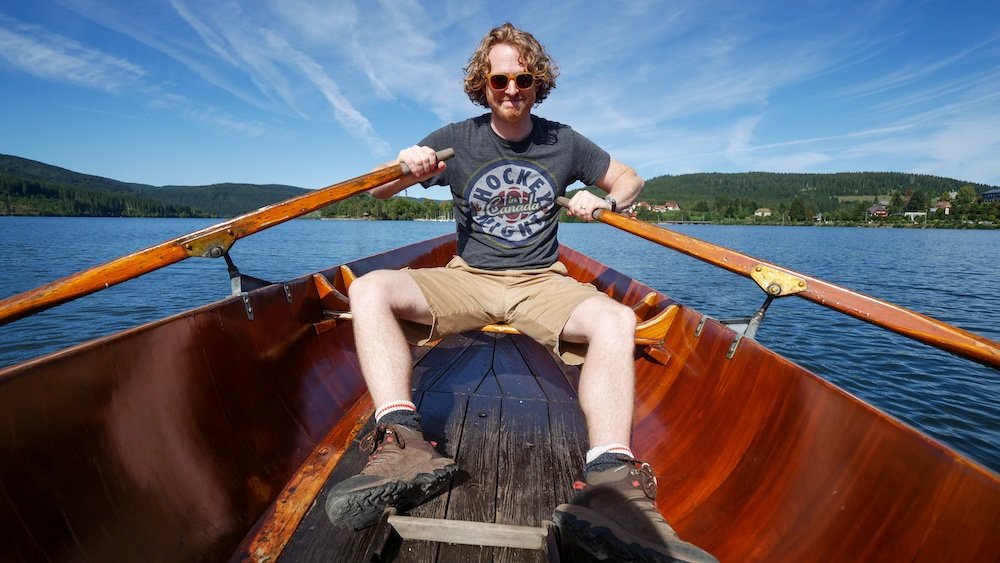
Planning a trip to an expansive region like the Black Forest can feel overwhelming. You might wrestle with questions: How do I get around? Which trails are best for beginners or families? Where should I eat and sleep that’s both authentic and cost-effective? This guide tackles these issues head-on, trimming the fluff so you can focus on your itinerary.
Our Travel Video From The Black Forest on Samuel and Audrey YouTube Channel: Nomadic Samuel + That Backpacker hosting
Why Visit The Black Forest?
This guide suits a broad mix of travelers. Families wanting an easy day by the lake, couples seeking romantic getaways in cozy chalets, and solo adventurers aiming for a big mountain challenge—everyone can find something. Even if you’re new to hiking or German culture, rest assured we’ll break it down in plain language.
Below, we’ll dive into the Top 10 Things To Do, from gliding along pristine lakes like Titisee and Schluchsee to tackling scenic hikes near Feldberg. We’ll also talk about must-try local foods and drinks, the best tours on offer, where to spend your nights, potential day trips, a rundown on getting around, and some final thoughts on how to make your trip unforgettable. So lace up your boots—or simply bring a hearty appetite—and let’s delve into the wonders of the Black Forest together.
Top 10 Things To Do in the Black Forest, Germany For Visitors
Ready to explore? Below are 10 standout experiences.
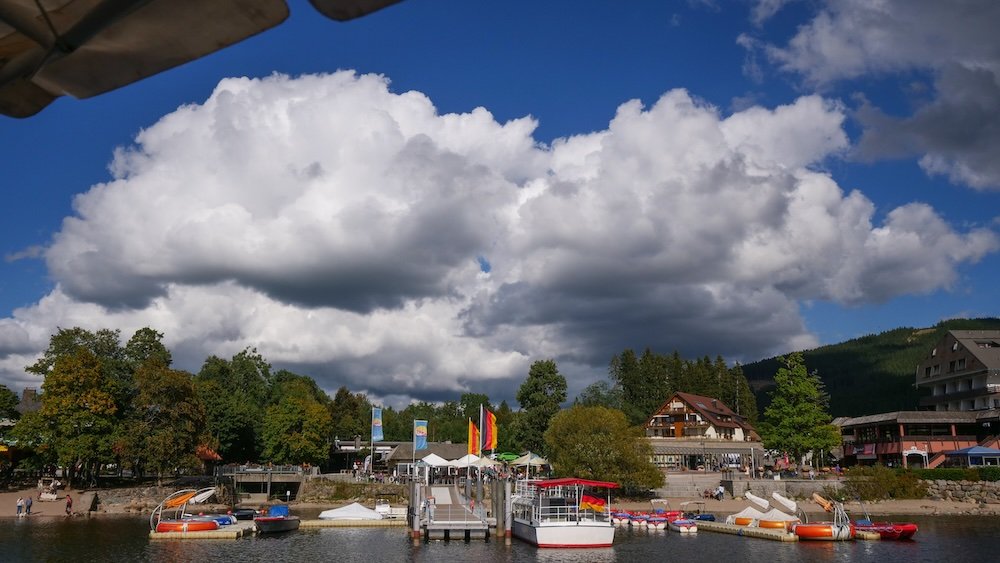
1) Titisee
Titisee is a picturesque lake tucked amid verdant hills. Its water shimmers in shifting shades of blue and green, framed by lush forests that seem to hug the shoreline. Boating is a major draw here—rent a small rowboat or hop aboard a guided cruise for a leisurely spin. Along the lakefront, shops and cafés invite you in with souvenirs, ice cream, and that quintessential Black Forest Cake. In warmer months, you can swim in designated areas or simply lounge by the water with a good book. The combination of mountain air, gentle waves, and bustling boardwalk energy leaves visitors enamored.
- What to Do: Paddleboat rentals, lakeside picnic spots, or short forest hikes nearby.
- Best Time: Summer for water activities; early autumn for gorgeous foliage reflections.
- Photo Ops: Capture the morning mist drifting across the lake’s surface.
Tip: Arrive early in peak season to secure parking or a prime lakeside seat, as Titisee gets lively by midday.
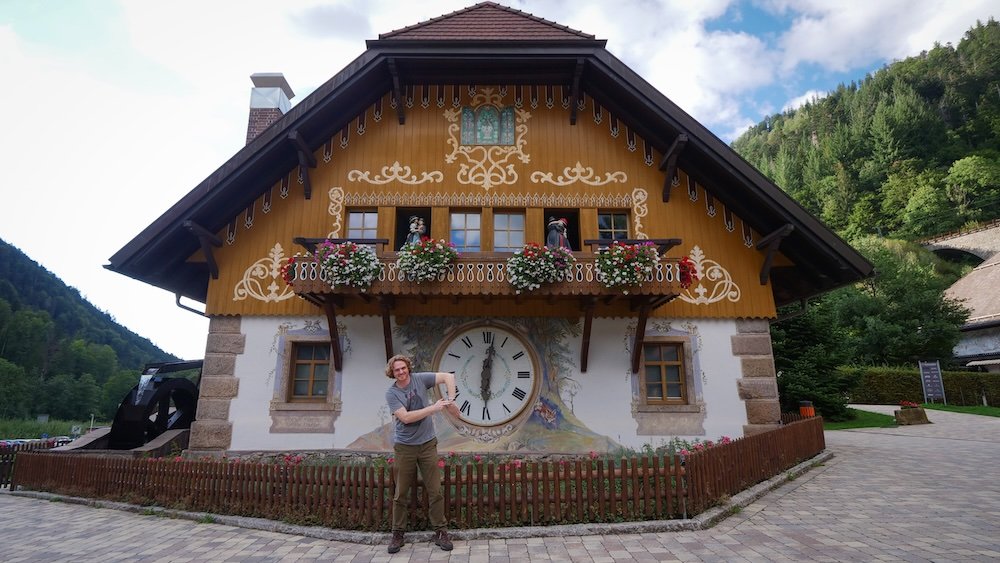
2) Hofgut Sternen
Hofgut Sternen is more than just a lodging complex; it’s a cultural hub steeped in Black Forest lore. The site boasts traditional architecture with half-timbered facades, plus artisan workshops celebrating time-honored crafts. Glassblowers often demonstrate their craft on-site, shaping molten glass into delicate ornaments. If you’re hungry, the restaurants serve hearty regional fare—from crispy schnitzel to fluffy Kaiserschmarrn. The grounds also host a small shop brimming with handmade souvenirs, including the famed cuckoo clocks. Staying here immerses you in a modern yet historical environment that’s both instructional and cozy.
- Highlight: Glassblowing demos where you can watch masters create intricate pieces.
- Dining: Authentic local dishes, often with seasonal ingredients.
- Atmosphere: A blend of rustic and refined, enhanced by warm lighting and wooden beams.
Tip: Take the time to chat with artisans—their stories enrich every item you purchase or see.
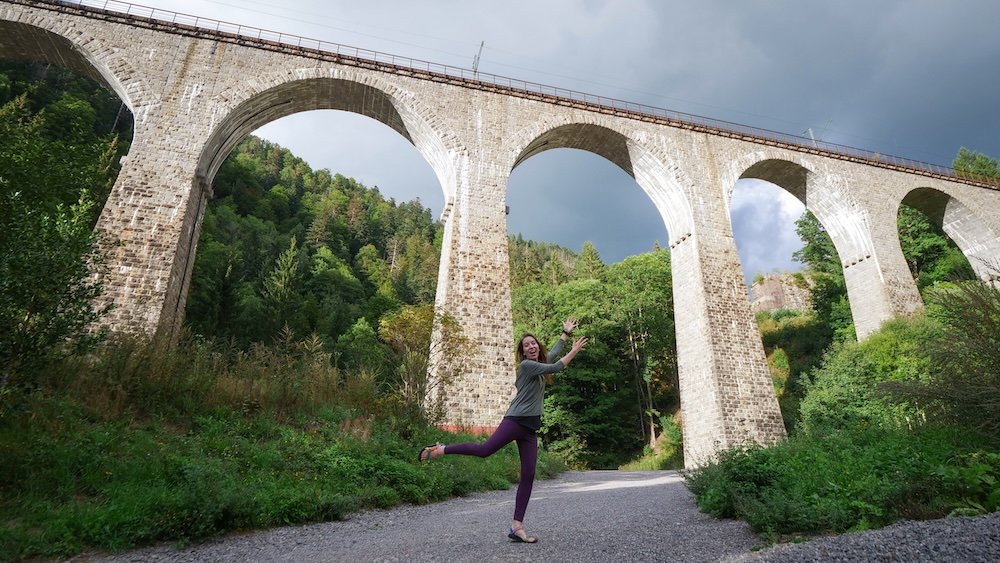
3) Ravenna Viaduct
The Ravenna Viaduct is an architectural marvel—a towering railway bridge stretching majestically over a deep gorge. Built in the 19th century, its stone arches frame the surrounding evergreens in a dramatic union of industry and nature. Trains occasionally rumble across, evoking nostalgia for a bygone era of steam engines and cross-country travel. Photographers flock here to capture the interplay of sunlight, treetops, and weathered stone. Viewing platforms give vantage points for snapping memorable panoramas. Standing beneath these arches, you feel small yet oddly connected to history’s grand ambitions.
- Location: Near Hofgut Sternen and Ravenna Gorge, perfect for a combined trip.
- Best Light: Early morning or late afternoon offers softer, more dramatic shadows.
- Safety: Stick to designated paths and railings if exploring the gorge below.
Tip: Pack a wide-angle lens if you’re serious about capturing the viaduct’s full majesty in one shot.
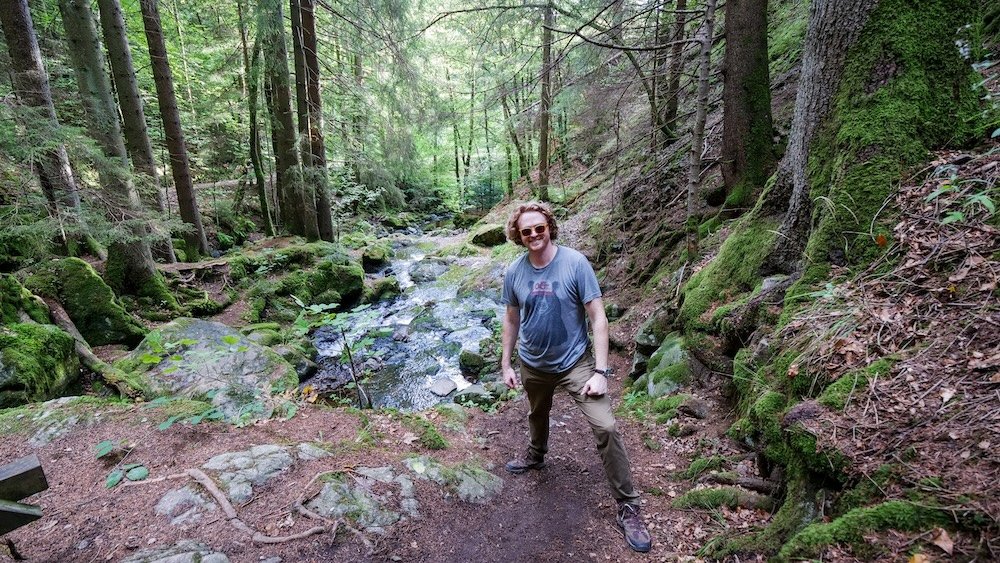
4) Ravenna Gorge Hike
The Ravenna Gorge—also known as Ravennaschlucht—serves up an invigorating hike through a mossy ravine carved by the Ravenna stream. The trail meanders past waterfalls, wooden bridges, and footpaths that sometimes cling to the gorge’s edges. Though not extremely difficult, it demands decent footwear and some caution around slippery rocks. The environment feels enchanted, especially when dappled sunlight filters through leaves onto the gurgling water below. You might spot birds darting between trees or even small critters scurrying across your path. Escaping the crowds, you’ll tap into the serene pulse of the Black Forest’s deep interior.
- Trail Length: Varies from short loops to multi-hour treks; pick your comfort level.
- Essential Gear: Sturdy shoes, a refillable water bottle, and a light rain jacket just in case.
- Season: Summer is lush, but autumn’s colors can be breathtaking.
Tip: Combine with a stop at Hofgut Sternen or the Ravenna Viaduct for a day rich in natural and cultural highlights.
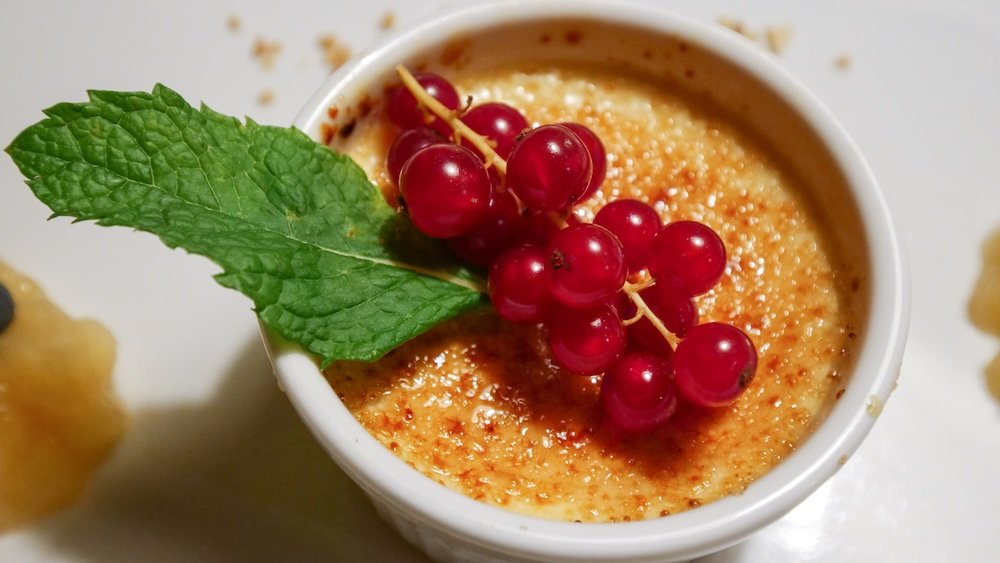
5) Dinner at Schwarzwald Stube
When evening falls, Schwarzwald Stube is a top choice for a memorable meal. Located in a quaint setting, it brings together modern German cuisine and classic Black Forest comfort. The interior brims with polished wood and subtle lighting, creating an elegant yet unpretentious vibe. Their menu often rotates with the seasons, spotlighting local produce—like venison from nearby forests or trout from regional streams. Skilled chefs elevate each dish with inventive twists, turning even standard favorites into gourmet delights. The staff’s welcoming approach adds that final touch, making dinner as cozy as it is delicious.
- Cuisine: Upscale German fare with occasional French influences.
- Signature Dishes: Try game meat stew in winter or fresh asparagus in spring.
- Dress Code: Smart casual suits the refined yet relaxed atmosphere.
Tip: Reserve a table in advance, especially on weekends, as locals and travelers alike vie for seats.
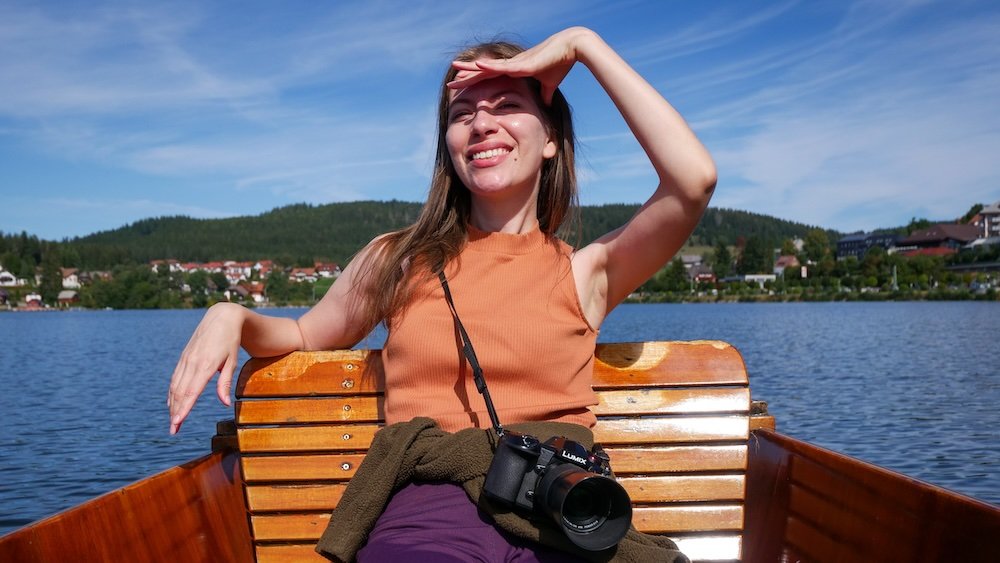
6) Schluchsee
Schluchsee is another lake but with its own distinct charm. Larger than Titisee, it’s a magnet for water sports—from windsurfing to kayaking. The surrounding trails invite leisurely strolls or more robust hikes, while a lakeside promenade welcomes joggers and cyclists. If you’re into fishing, you can grab a permit and try your luck at trout or pike. During summer, designated swim zones fill with families and enthusiastic swimmers enjoying the refreshing waters. With fewer crowds than some other hotspots, Schluchsee offers a spacious, tranquil environment to escape daily hustle.
- Activities: Sailing, rowboating, paddleboarding, or biking around the shoreline.
- Nearby Town: The village of Schluchsee has shops for gear rentals and groceries.
- Winter Twist: In colder months, cross-country skiing trails appear near the frozen lake.
Tip: Bring a picnic—there are picturesque spots aplenty for a waterside lunch.
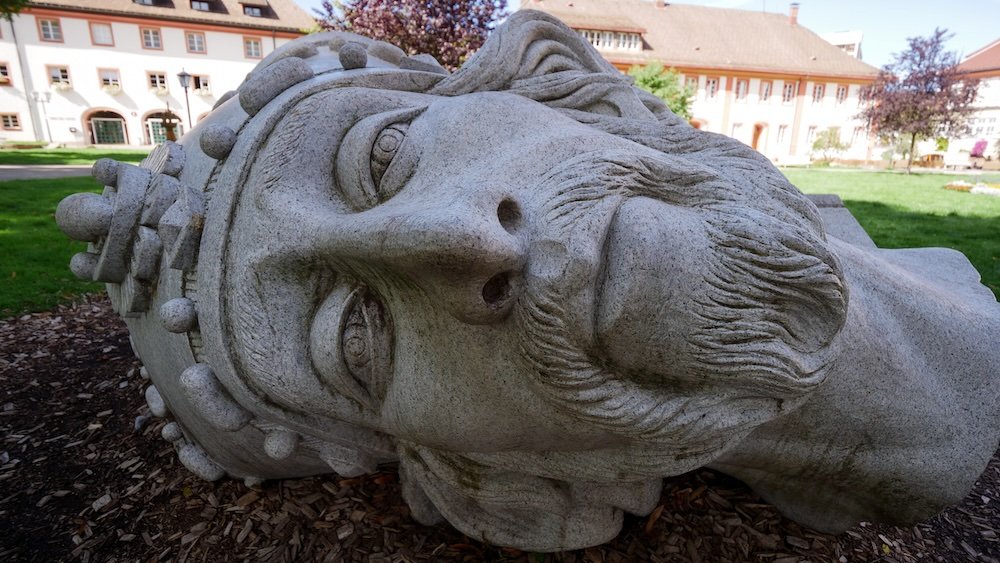
7) Sankt Blasien
Sankt Blasien is a small town known for its majestic cathedral, the Dom St. Blasien, featuring one of the largest domes in Europe. The pristine white interior offers a serene escape, while outside, the town’s tidy streets highlight classic Black Forest architecture. Cafés and bakeries tempt passersby with indulgent pastries, and local shops sell handcrafted wares. A gentle stream weaves through the center, complementing the peaceful vibe. If architecture and spirituality intrigue you, the cathedral’s neoclassical design is a must-see. You can also find forest trails branching out from town, blending nature with cultural exploration.
- Main Draw: The imposing domed cathedral—an iconic architectural gem.
- Local Flavors: Sample fresh bread or pretzels from a family-run bakery.
- Nearby Attractions: Hiking routes lead up into forested hills for panoramic views of the dome below.
Tip: Check the cathedral schedule for organ recitals or choir performances, which amplify the ambience inside.
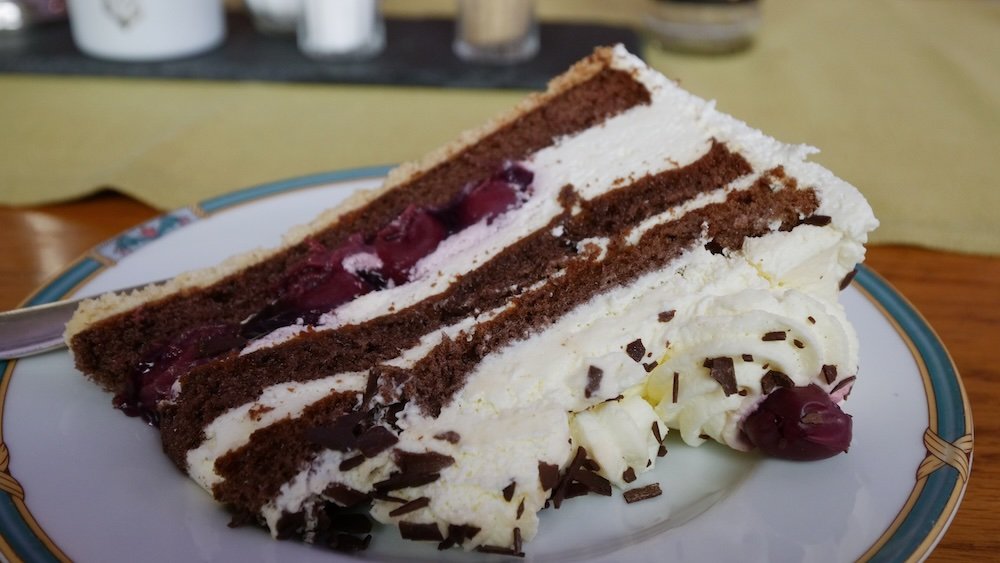
8) Lunch and Black Forest Cake at Dom-Hotel
After exploring Sankt Blasien, head to Dom-Hotel for a leisurely lunch. The menu celebrates regional staples—like succulent roasted pork, creamy potato dishes, and hearty soups to warm you up. But the crowning glory? Their Black Forest Cake, layered with cherries, whipped cream, and chocolate shavings. The sweet-tart balance paired with a strong coffee is a highlight you won’t forget. Interiors are cozy, with panoramic windows showcasing the cathedral’s dome in all its grandeur. It’s an ideal midday pitstop that combines sustenance and scenic surroundings.
- Specialties: Regional sausages, spätzle, and local trout when in season.
- Dessert Standout: The famed Schwarzwälder Kirschtorte—make room for it no matter what.
- View: Dining area often looks onto Sankt Blasien’s bustling main square.
Tip: Share a slice if you’re feeling full. The cake’s richness means you can easily split one and still walk away satisfied.
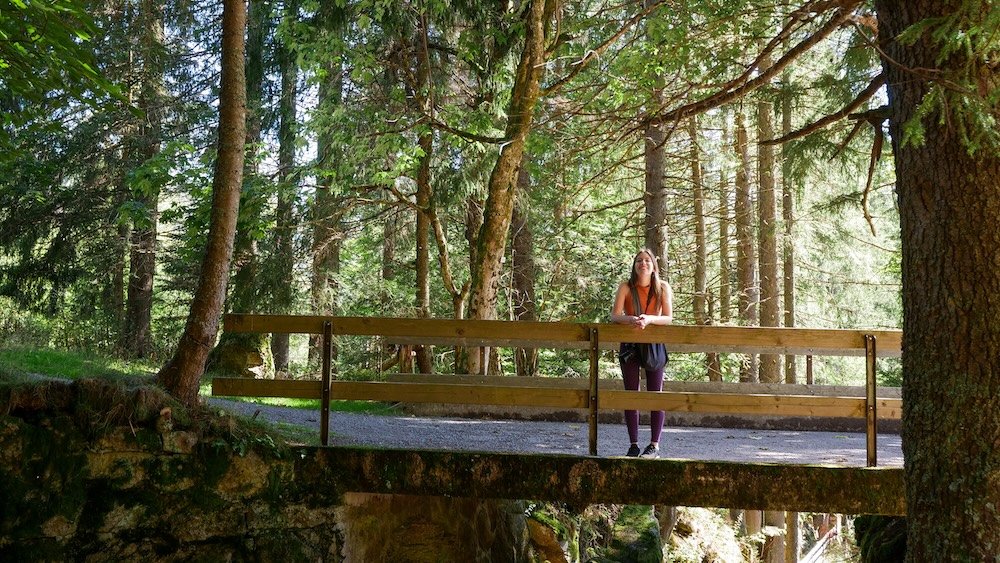
9) Menzenschwand Hike and Waterfall
Menzenschwand is a lesser-known gem, offering a quieter Black Forest escape. The village sits at the foot of wooded slopes, where a handful of hiking trails begin. One popular route leads you to a charming waterfall, trickling or roaring depending on the season. Expect to cross quaint bridges, pass meadows dotted with wildflowers, and possibly see local wildlife—ranging from squirrels to deer. In winter, nearby slopes host modest ski runs, adding a layer of year-round appeal. This area’s calm ambiance feels more personal, like you’ve uncovered a secret corner all your own.
- Trail Difficulty: Mostly moderate; some paths may have rocky sections.
- Refreshments: Local inns sometimes have homemade pies or fresh drinks.
- Kid-Friendly: The waterfall can be an exciting reward for younger hikers.
Tip: Pause at the viewpoint above the waterfall for panoramic shots—clear days reveal sweeping forest vistas.
10) Feldberg Cable Car and Hike
The Feldberg is the Black Forest’s highest peak, and its cable car whisks you toward lofty vantage points in minutes. Once atop, you can choose from various hiking trails tailored to your energy level. Some paths remain gentle, looping across meadows dotted with wildflowers, while advanced routes ascend rocky outcrops for adrenaline-pumping panoramas. In winter, Feldberg transforms into a ski hub, and the cable car ride reveals a snow-blanketed wonderland. Even if you’re not a hardcore trekker, you can enjoy the fresh air, glimpses of distant valleys, and that liberating sense of being on top of the world. Don’t forget to drop by the visitor center, which often hosts exhibits on local flora, fauna, and environmental conservation.
- Altitude: Over 1,400 meters, so pack layers to combat temperature swings.
- Visitor Center: Info on guided walks, winter sports passes, and seasonal events.
- Nearby Chalet: Cozy huts or lodges sell hot chocolate and regional snacks.
Tip: Start your hike early to beat midday crowds, especially during peak summer or ski season.
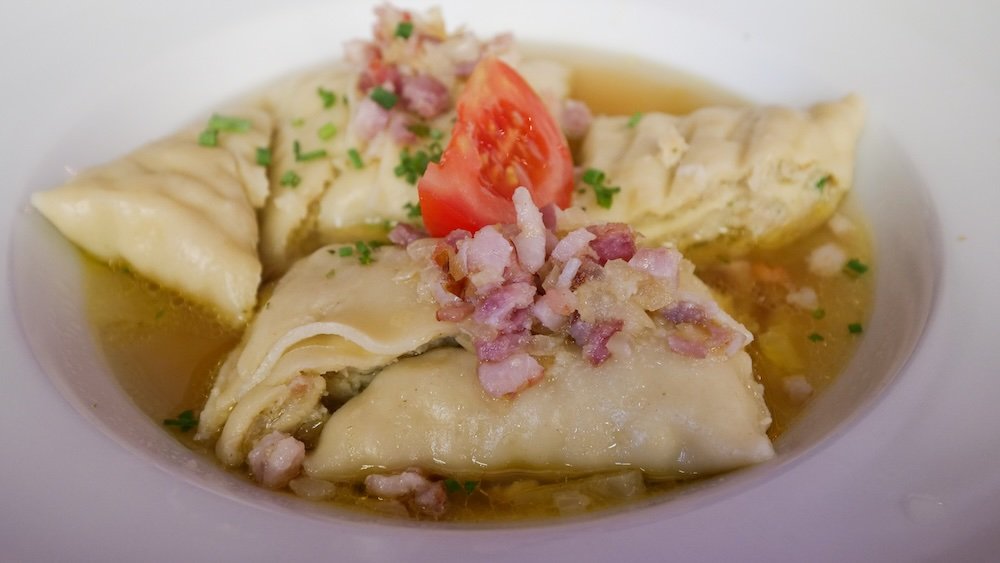
What To Eat and Drink in the Black Forest, Germany
The Black Forest region of Germany boasts a travel guide worth of culinary traditions. Tasty, hearty, and steeped in heritage, the local foods mirror the lush forests and fertile valleys that define the area. Below is an overview of regional specialties, sweet treats, and beverages you shouldn’t miss.
Hearty Main Dishes
- Schwarzwälder Schinken (Black Forest Ham): Cured with special spices and smoked over fir or spruce wood. It’s often sliced paper-thin, served with rustic bread, or included in salads.
- Spätzle: Egg-based noodles that appear in many forms—plain, cheesy (Käsespätzle), or served with gravy.
- Forelle (Trout): Caught from local streams or lakes, typically pan-fried with a buttery herb crust.
Why It’s Unique: The region’s smoked ham technique is centuries old, while spätzle and trout reflect fresh, mountain-sourced ingredients.
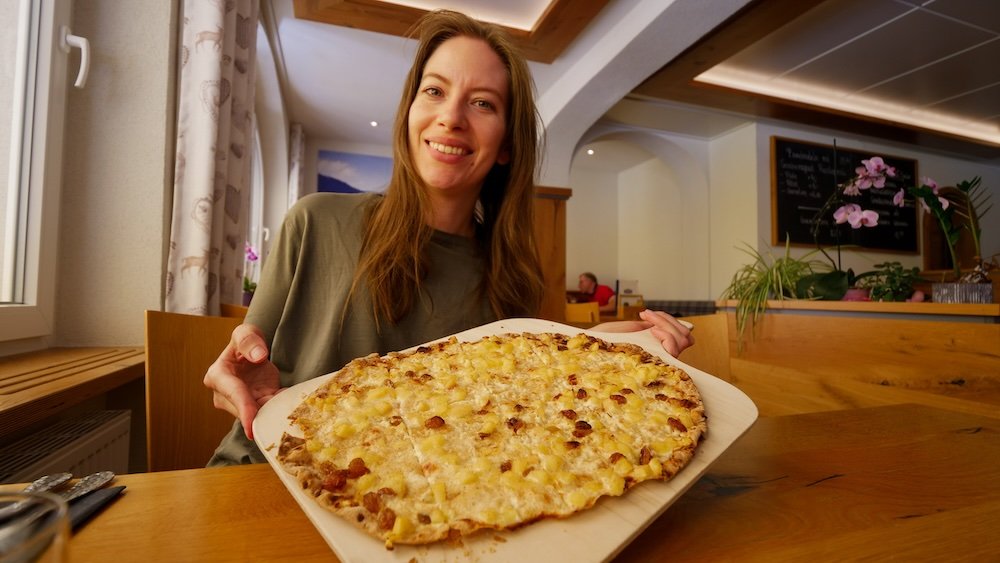
Tip: Order spätzle alongside a meat dish—the soft noodles soak up sauces beautifully.
Sweet Indulgences
- Black Forest Cake (Schwarzwälder Kirschtorte): A showstopper layered with chocolate sponge, whipped cream, and cherries steeped in kirsch.
- Schwarzwälder Kirschen: These local cherries, sweet or sour, often appear in jams, preserves, or desserts.
- Apple Strudel: Not exclusive to the Black Forest, but local apples and spices give it a special twist.
Why It’s Unique: The liberal use of kirsch—a cherry liqueur—amplifies the flavors, especially in the iconic Black Forest Cake.
Tip: Savor each layer of Black Forest Cake to fully appreciate the interplay of chocolate, cream, and cherry tang.
Local Snacks & Street Food
- Rote Wurst: A red sausage that’s mildly spiced, often served in a bun with mustard.
- Pretzels (Brezeln): Perfect for on-the-go munching, usually with a salted crust.
- Kartoffelpuffer (Potato Pancakes): Crispy on the outside, soft inside, sometimes topped with applesauce or sour cream.
Why It’s Unique: Street food in the Black Forest merges broader German influences with local produce, guaranteeing fresh flavors.
Tip: Stop by markets or festivals for the best chance to sample these handheld favorites in an authentic setting.
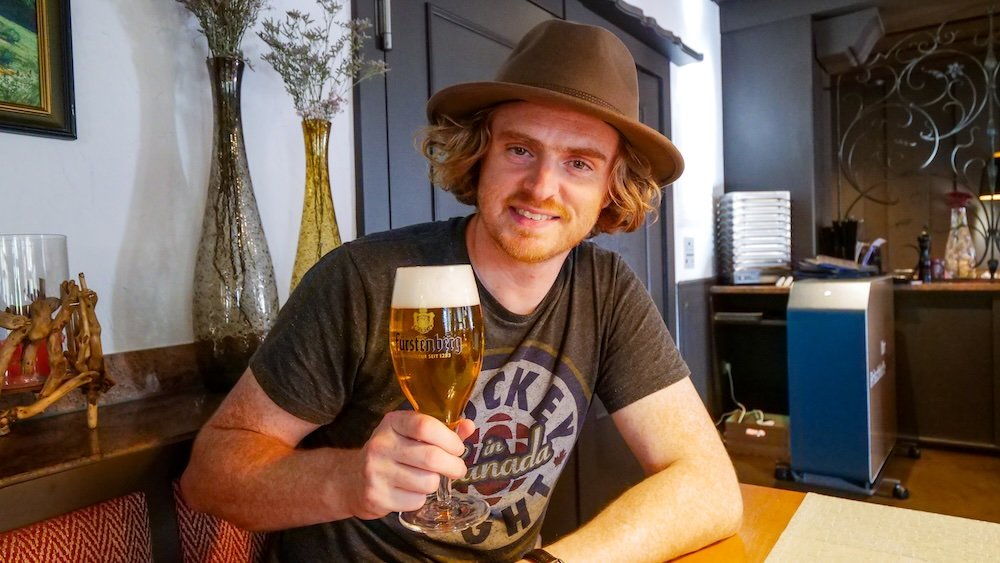
Beverages
- Kirschwasser: A clear cherry brandy used in desserts or savored neat. Its fruity warmth sums up the region’s orchard heritage.
- Beer: Germany’s love affair with beer extends here, featuring local breweries that produce crisp lagers and occasional dark ales.
- Wine: Nearby wine-growing areas (like Baden) supply aromatic whites—Pinot Gris or Riesling—that pair nicely with the heavier local cuisine.
Why It’s Unique: The region’s fruit distilleries reflect centuries of tradition, and the climate fosters robust orchard yields.
Tip: Request a local Kirsch after dinner—it’s not just a drink but a cultural staple that finishes a meal with style.
Dessert & Café Culture
Café breaks are a beloved pastime. Many mountain towns feature cozy spots where you can enjoy a slice of cake and a cappuccino. Don’t be shy about trying lesser-known pastries, like a Schwarzwälder Kirschtorte variant infused with different berries or even savory quiches featuring local ham. The atmosphere is typically unhurried, encouraging you to linger, chat, or read a book. Locals value the concept of “Gemütlichkeit,” a mix of coziness and conviviality that’s deeply rooted in German culture. Embracing this vibe means truly slowing down to relish each bite.
Why It’s Unique: The synergy of local produce, tradition, and an unhurried approach to eating fosters a sense of deep enjoyment.
Tip: Ask about seasonal specialties—you might find game meats in autumn or spiced Christmas cookies in winter.
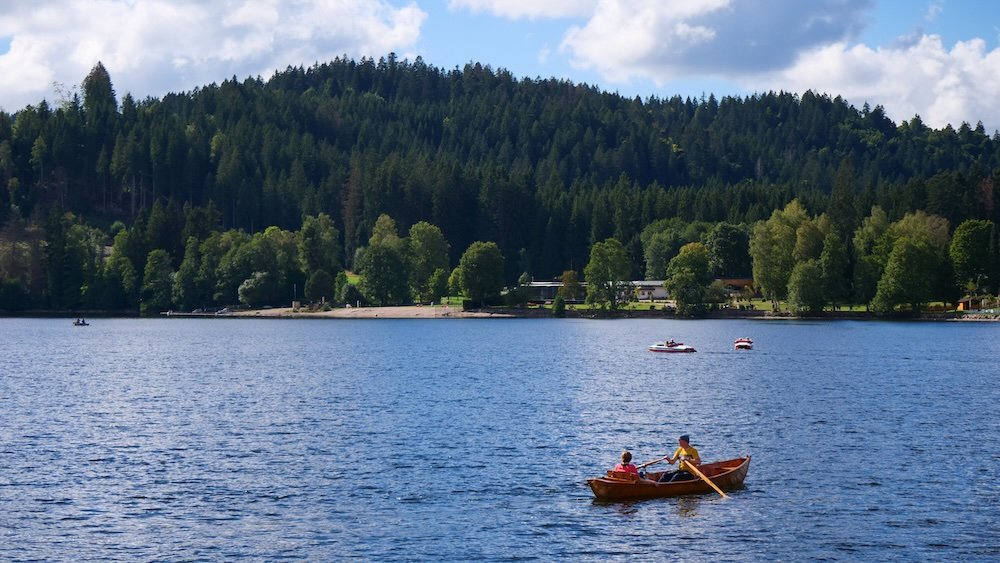
Tours For Visitors to the Black Forest, Germany
Sometimes exploring solo is fun. But organized tours can streamline your planning and grant insider knowledge you’d otherwise miss. Here’s a snapshot of curated things to do in the Black Forest, served up by local guides and tour operators, designed for different travel tastes.
1) Scenic Bus and Boat Tours
For those wanting an overview without too much walking, scenic bus tours present a comfy ride through lush valleys and quaint villages. Many itineraries pause at vantage points—like Feldberg or Titisee—where you can snap scenic photos. Some also include short boat rides across iconic lakes, merging laid-back sightseeing with gentle breezes. These tours often start in gateway cities, such as Freiburg, ensuring an easy pick-up and drop-off. Expect entertaining commentary about local legends, from cuckoo clock lore to Black Forest Cake origins. The vibe is relaxed, perfect if you’re short on time or have mobility concerns.
- Booking: Online through local agencies or via your hotel’s recommendations.
- Duration: Typically half-day to full-day, with scenic stops.
- Inclusions: Some tours bundle lunch or coffee breaks at known spots.
Tip: Ask about a seat on the window side—these vantage points enhance photo ops along winding roads.
2) Hiking and Nature Tours
The Black Forest’s raw beauty reveals itself best on guided hikes, whether that’s a gentle loop or a challenging summit trek. Certified guides know offbeat paths, rare flora, and vantage points seldom found on basic trail maps. You’ll not only see waterfalls or panoramic ridges but also hear tidbits about local wildlife—like the black grouse or red deer. Some tours offer “forest bathing” elements for stress relief, letting you immerse in the forest’s calm. For multi-day enthusiasts, certain operators handle lodging logistics, so you can focus on the journey. Perfect for travelers yearning a deeper communion with nature.
- Group Size: Varies from intimate groups of 4-8 to bigger gatherings.
- Equipment: Tours often provide trekking poles or suggest essential gear.
- Season: Summer and early autumn are prime, though winter snowshoe tours exist, too.
Tip: Inquire about difficulty levels—guides can tailor routes to your fitness and interest.
3) Culinary and Winery Tours
Foodies and wine lovers rejoice: culinary tours highlight the best local delicacies, from luscious Black Forest ham to decadent pastries. Some tours commence at a bustling market, where vendors offer tastes of smoked meats, artisanal cheeses, and seasonal produce. Then you might visit a winery near the edge of the forest, sampling crisp Rieslings or earthy Pinots. Culinary walks can also include cooking demonstrations or private tastings with the chef. You’ll leave stuffed, satisfied, and brimming with insider tips for your next meal.
- Locations: Freiburg, Baden-Baden, and smaller wine villages often star in these tours.
- Reservations: In high season, book early—these experiences are popular.
- Dietary Options: Vegetarian or gluten-free versions might be available—always check in advance.
Tip: Bring extra euros—you’ll likely want to purchase local goodies to savor later.
4) Adventure Tours (Canyoning, Paragliding, Mountain Biking)
Crave adrenaline? The Black Forest’s geography welcomes canyoning along narrow gorges, paragliding over rolling hills, or mountain biking down twisting forest trails. Guided tours ensure safety, gear rental, and a route matched to your skill. Paragliding tandem flights let novices glide above the treetops with an expert pilot. Meanwhile, canyoning tours have you rappel down waterfalls, slip along natural slides, and relish the rushing water’s embrace. For mountain bikers, singletrack paths challenge your reflexes while awarding you with epic vantage points.
- Gear Provided: Helmets, harnesses, wetsuits, or mountain bikes—depending on the activity.
- Prerequisites: Basic fitness, comfort with heights, or swimming ability for canyoning.
- Photo Potential: Many guides snap pictures or helmet-cam footage so you can brag later.
Tip: Wear quick-dry clothing if you’re doing water activities—no one likes a soggy ride home.
5) Cultural and City Tours (Freiburg, Triberg, Gengenbach)
Though renowned for nature, the Black Forest also hosts charming towns with cobblestone alleys, half-timbered houses, and historical wonders. A city tour in Freiburg might lead you through the Gothic cathedral, vibrant squares, and side streets brimming with cafes. Triberg lures visitors with Germany’s highest waterfalls and cuckoo clock shops at every corner. Meanwhile, Gengenbach radiates storybook charm, especially at Christmas when each window of its town hall transforms into a giant Advent calendar. These cultural tours typically combine a dash of architecture, local legends, and a heartfelt sense of place.
- Transport: Some tours are fully walking-based, while others include short shuttle hops.
- Local Flavors: Keep an eye out for bratwurst stands or pastry shops along the route.
- Narrative Style: Guides usually recount city origins, prominent families, and contemporary living tips.
Tip: Stay open to spontaneous detours—often the best gem is down a side alley your guide knows by heart.
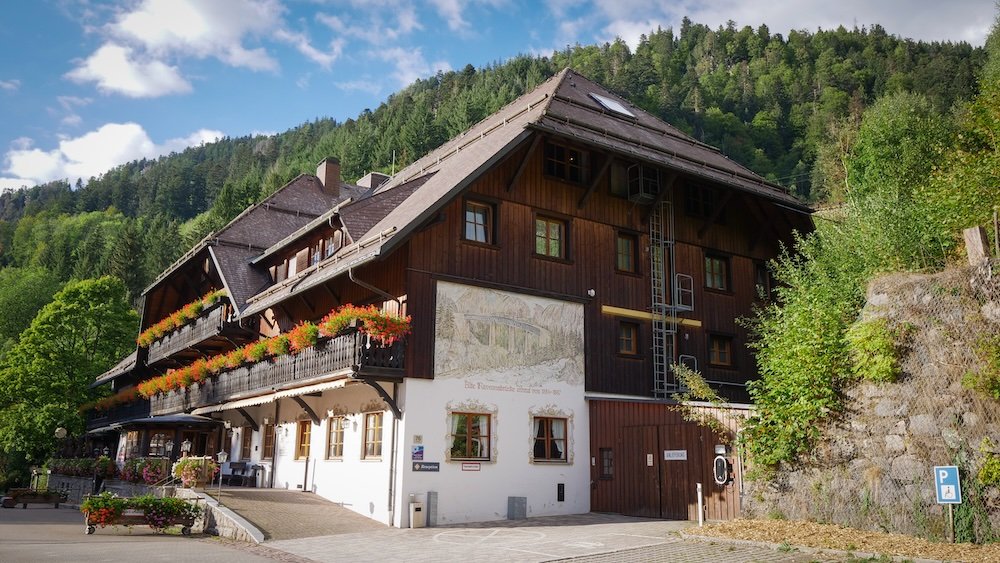
Black Forest Accommodations Guide: Hotels, Guesthouses and Hostels
Finding a great place to stay can elevate your Black Forest journey from decent to unforgettable. Whether you want an upscale hotel with a spa or a budget-friendly hostel near hiking trails, the region caters to all. Let’s break down the lodging options so you can rest well between your chosen things to do.
Hotels
Hotels in the Black Forest range from historic inns with dark wooden beams to modern establishments featuring sleek designs and wellness centers. You’ll often spot them in tourist-friendly hubs like Freiburg, Titisee-Neustadt, or Baden-Baden. Many hotels emphasize local touches, like offering Black Forest ham at breakfast or employing staff clad in traditional attire. Spa features might include saunas, steam rooms, or even indoor pools with forest views. If convenience and classic amenities are your priorities—think 24-hour front desk, in-room Wi-Fi, onsite dining—hotels are a reliable bet. Prices vary widely, so booking in advance is wise, especially in peak hiking or ski seasons.
- Location Tips: Urban hotels near train stations for easy transport, or lakeside properties for scenic serenity.
- Star Ratings: Don’t rely solely on star count—read reviews to gauge personal touches and overall comfort.
- Seasonal Perks: Some hotels throw in a free local transport card or discount for popular attractions.
Pro Tip: Look out for special deals offering half-board (breakfast and dinner), which can save money if you’re staying multiple nights.
Guesthouses (Gasthöfe) and B&Bs
If you crave a more personal vibe, guesthouses and bed-and-breakfasts deliver. Usually family-run, they envelop you in cozy decor, homemade breakfast spreads, and a sense of local tradition. Rooms can be simpler than in big hotels, but the warmth and authenticity often compensate. Many even have on-site restaurants focusing on regional dishes—like spätzle, hearty soups, or fruit tarts made with orchard-fresh produce. Chatting with hosts can yield insider tips: hidden viewpoints, lesser-known cafes, or the best times to visit local markets. For many travelers, the intangible sense of belonging is worth more than marble lobbies.
- Room Styles: Rustic wooden furniture, bright floral curtains, or modern updates in older buildings.
- Interaction: Expect friendly conversation, staff or owners who genuinely care about your day.
- Extras: Some guesthouses feature communal lounges, small libraries, or evening campfires.
Pro Tip: Don’t skip breakfast—it’s often a highlight, showcasing homemade jams and fresh-baked bread.
Farm Stays and Cottages
In a region brimming with meadows and farmland, farm stays offer a slice of rural bliss. Here, you might wake to roosters crowing or spend afternoons with cows grazing nearby. Children love seeing animals up close, while adults unwind in the countryside hush. Many farm stays come with newly renovated cottages featuring modern kitchens and private porches. Sipping coffee amid rolling hills or starlit skies can be pure magic. It’s an unplugged retreat, perfect for anyone seeking a break from city noise.
- Booking: Check “Urlaub auf dem Bauernhof” websites or local tourism offices for accredited options.
- Activities: Farm tours, helping with chores, or picking fresh produce in season.
- Meal Options: You might have a small kitchenette or get invited to dine with the host family.
Pro Tip: Ask about seasonal farm events—like apple harvests or small local festivals—to add color to your stay.
Hostels
For budget-conscious travelers or social butterflies, hostels exist in spots like Freiburg or near popular hiking zones. Dormitory beds keep costs low, while some hostels also provide private rooms for couples or families. Common areas encourage meeting fellow explorers, often resulting in shared day trips or group dinners. Don’t expect uniform decor—some are minimalist, while others go big on quirky mountain lodge aesthetics. Hostels also tend to have free city maps, tourist brochures, and staff well-versed in local must-sees.
- Atmosphere: Youthful and casual, but not necessarily loud—some are family-friendly.
- Facilities: Communal kitchens, game rooms, laundry, maybe a small bar for evening hangouts.
- Check In: Some have strict desk hours; coordinate if arriving late.
Pro Tip: Bring earplugs—dorm sleeping can be unpredictable if others have different schedules.
Booking Advice
- Peak Seasons: Summer (hiking) and winter (skiing) fill up quickly. Book 2-3 months ahead for popular towns.
- Cancellation Policies: Read the fine print to avoid fees if your plans shift.
- Special Offers: Some properties partner with local tourist boards, offering free or discounted attractions.
Pro Tip: Stay flexible—a short train or car ride can open up less-crowded lodging in neighboring towns, often at lower prices.
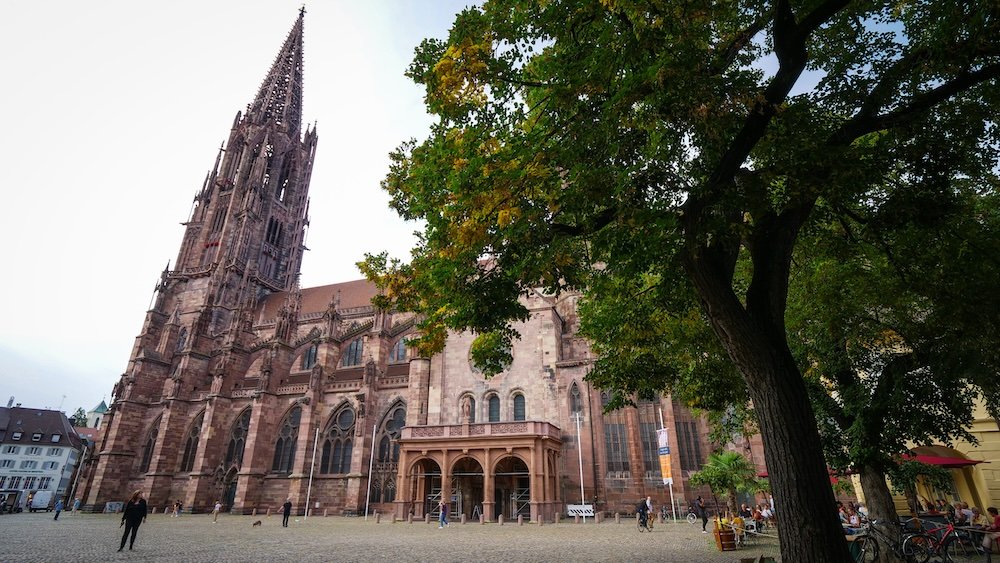
Day Trips From the Black Forest, Germany
Though you could spend weeks exploring the Black Forest’s wonders, its convenient location also invites day trips to neighboring towns and even across borders. Whether you’re keen on more things to do or seeking fresh scenery, these excursions expand your horizons without draining your travel hours.
Our Travel Video From Freiburg, Germany on Samuel and Audrey YouTube Channel: Nomadic Samuel + That Backpacker as hosts
1) Freiburg
Technically on the Black Forest’s edge, Freiburg merges medieval charm with a lively student population. A day here might start at the Freiburg Münster (cathedral), marveling at its Gothic spires, then strolling the cobblestone streets around Münsterplatz. You’ll encounter cafes, boutiques, and local markets brimming with produce and handmade crafts. The city’s “Bächle”—small water channels running alongside sidewalks—add unique flair; watch your step or your foot might get a surprise splash. For lunch, sample local wines or microbrews at a breezy biergarten. Round out the afternoon by hopping on a scenic gondola ride up Schauinsland for panoramic city and forest views.
- Travel Time: Often under an hour by train or car, depending on your Black Forest base.
- Highlights: Street musicians, lively squares, and the bustling daily market.
- Tip: Evening sees students unwinding in bars—join them for an easygoing vibe.
Pro Tip: Book a quick city walking tour if you’ve limited time; it fast-tracks your understanding of Freiburg’s highlights.
2) Strasbourg, France
Just across the border, Strasbourg enchants with half-timbered houses and winding canals in its Petite France district. The iconic Strasbourg Cathedral impresses with its soaring gothic façade, and if you climb the tower, the city below unfurls like a storybook. Wander the cobblestone lanes to find hidden pastry shops selling flaky croissants or enjoy a tarte flambée for lunch. A boat ride along the Ill River reveals scenic angles of old bridges and medieval towers. If you visit near December, the Christmas markets transform the city into a festive wonderland. Strasbourg seamlessly blends German and French influences, making it a cultural treat.
- Transport: Around 1-2 hours by train from various Black Forest towns.
- Language: Predominantly French, though many restaurants have German menus too.
- Souvenirs: Alsatian wine, local gingerbread, or whimsical pottery.
Pro Tip: Check out the Astronomical Clock inside the cathedral at noon for a mini spectacle featuring moving figures.
3) Baden-Baden
Baden-Baden is a thermal spa town famed for its opulent bathhouses—like the Friedrichsbad or Caracalla Spa—where you can soak away fatigue in warm mineral waters. The streets exude elegance, lined with upscale boutiques, grand hotels, and sidewalk cafés serving decadent pastries. If cultural pursuits call, catch a show at the Festspielhaus, Europe’s second largest opera house. The city also backs onto wooded hills with mild hiking trails. Whether you lounge in a spa, gamble at the chic casino, or sip tea in a pastel-hued café, Baden-Baden oozes refined leisure.
- Driving Distance: About an hour or so from central Black Forest areas.
- Spa Etiquette: Check if certain pools require nudity or if swimsuits are allowed—differences abound.
- Casino Dress Code: Smart attire if you plan to test your luck in the gaming halls.
Pro Tip: Book spa entries ahead in peak season—bathing capacity can fill quickly.
4) Lake Constance (Bodensee)
A bigger water body than anything in the Black Forest, Lake Constance crosses Germany, Austria, and Switzerland. A day trip to towns like Meersburg or Konstanz treats you to lakefront promenades, medieval architecture, and ferry rides connecting scenic points. You can tour vineyards, lounge on small beaches, or cycle along the lake’s perimeter. In Meersburg, the old castle perched above the shoreline offers commanding vistas. Konstanz boasts a bustling pedestrian zone and a famed harbor statue—“Imperia”—which rotates slowly, adding a dash of whimsy.
- Travel Duration: Typically 1.5 to 2 hours by car from southwestern Black Forest.
- Activities: Boat cruises, wine tasting, museum visits, or a short hop to the Swiss side.
- Climate: Mild summers often lead to boat-filled waters, so join the fun or watch from a café.
Pro Tip: Plan a boat crossing if time permits—it’s an easy way to see multiple lakeside towns in one outing.
5) Basel, Switzerland
Another cross-border gem, Basel marries Swiss precision with a lively art scene. Stroll the Old Town’s cobblestone lanes, flanked by pastel-hued buildings, or admire the Basel Minster perched over the Rhine. The city’s museums stand out: the Kunstmuseum or Tinguely Museum enthrall art lovers, while the Toy Museum charms families. A quick ferry ride across the Rhine is both scenic and a nod to local tradition. Basel’s café culture thrives, offering Swiss pastries or hearty soups when you need a break.
- Access: Direct trains from Freiburg or car routes crossing the Swiss border—remember you might need a vignette for Swiss highways.
- Currency: Swiss Franc (CHF), though some places accept euros with less favorable rates.
- Food: Embrace Swiss cheese fondue or chocolate shops brimming with fine confections.
Pro Tip: Keep an eye on store hours—Switzerland enforces strict closing times, especially on Sundays.
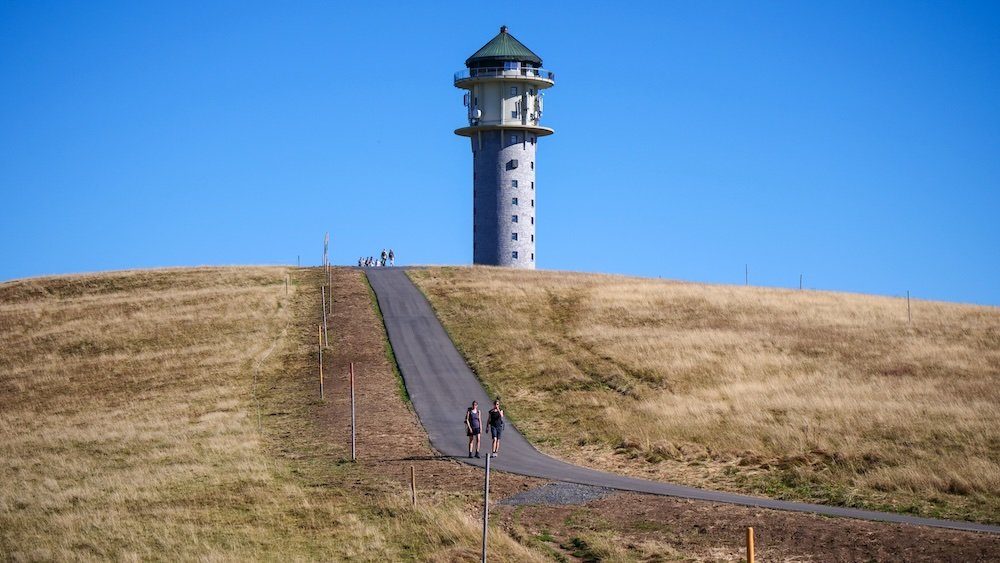
Black Forest Transportation Guide
Navigating the Black Forest requires some know-how, especially if you want to cover multiple things to do efficiently. From scenic train rides to renting a car for offbeat paths, you have a solid range of transportation choices. Below is a breakdown to help you plan your moves.
Trains
Deutsche Bahn (DB) and various regional lines crisscross the Black Forest, linking major towns like Freiburg, Offenburg, and Donaueschingen. Trains often wind through picturesque valleys, offering views that double as a mini sightseeing tour. Timetables run consistently, but some smaller stations may see fewer departures—especially on Sundays. Ticket types abound: from single-journey tickets to the Baden-Württemberg Ticket that grants day-long local travel across the state. While comfortable, trains might not drop you directly at remote hiking trailheads, so combine them with buses or cabs for the final stretch. For language, station signs and ticket machines typically include English options.
- Booking: DB app, station kiosks, or official websites.
- Value Tip: Group day passes can drastically cut costs if you’re traveling in pairs or families.
- Scenic Routes: The Höllentalbahn (Hell Valley Railway) near Freiburg is known for dramatic gorge views.
Pro Tip: Check platform changes—smaller stations can be easy to navigate, but last-minute switches happen.
Buses
Regional buses complement the rail network by reaching rural villages, lakes, and trailheads that trains skip. Bus schedules often align with train arrivals, minimizing wait times. In towns like Titisee-Neustadt or Hinterzarten, you’ll find central bus stops that serve as transfer hubs for journeys deeper into the forest. Fares can be paid in cash directly to the driver, and day passes might exist. Buses vary in frequency; some run hourly, others just a few times a day. Stay alert for holiday or Sunday timetables, which might reduce service.
- Stations: Look for posted route maps and timetables at each stop.
- Convenience: Great for short distances, but plan ahead if you’re relying solely on buses for an entire itinerary.
- Comfort: Modern buses typically have decent seating; some also have free Wi-Fi.
Pro Tip: Grab a timetable from local tourist offices or your hotel—digital info can be patchy in remote areas.
Car Rentals
Driving offers freedom to roam at your own pace, crucial if you crave secluded waterfalls or lesser-known vantage points. Highways like the B31 cut through the forest, while smaller roads reveal charming hamlets and farmland. Scenic detours can be part of the fun—just be prepared for winding roads that demand careful navigation, especially in winter. Parking in smaller towns is often manageable, though hotspots like Titisee might charge fees in peak season. Fuel stations accept cards, but having some euros on hand never hurts.
- Rental Agencies: Found in bigger cities (Freiburg, Offenburg) or near major train stations.
- Road Conditions: Well-maintained, but watch out for ice or snow from late autumn to early spring in higher altitudes.
- Driving Etiquette: Like the rest of Germany, lane discipline is key, and some rural roads can be narrow.
Pro Tip: Download offline maps—cell coverage can be spotty in forested or mountainous zones.
Biking
The Black Forest’s diverse terrain begs for cycling enthusiasts. Paved paths skirt lakes and meander across mild valleys, while mountainous singletracks challenge advanced riders. Towns like Freiburg are famously bike-friendly, offering rentals from local shops or hotel partnerships. Electric bikes (e-bikes) are another option, easing uphill climbs so you can soak in views without panting. If you plan a multi-day cycling adventure, B&Bs along the route often welcome cyclists, sometimes with gear storage or drying rooms.
- Best Season: Late spring to early autumn for mild temperatures and minimal ice.
- Routes: The Breisgau cycle path or scenic loops around Titisee and Schluchsee.
- Safety: Bring a helmet, especially on forest trails with uncertain terrain.
Pro Tip: Check for “RadBus” lines—some bus routes accommodate bikes, letting you skip overly steep sections.
Taxis & Rideshares
Taxis operate in larger towns, though you won’t find them as ubiquitous as in big cities. They can fill gaps for short hops—like from a station to your remote guesthouse—or after buses stop running in the evening. Fares can climb quickly over longer distances, so consider grouping or scheduling rides in advance. Rideshare services like Uber are less common, but local alternatives or phone-dispatched minicabs might exist. If you’re venturing far, a pre-negotiated rate or shuttle service could be cheaper.
- Availability: More consistent in Freiburg or Baden-Baden; sparser in rural pockets.
- Payment: Cash is still popular, though major towns might accept cards.
- Reliability: On call, but minimal in mountainous or less-populated areas.
Pro Tip: Save a local taxi number in your phone—this can be a lifesaver if you miss the last bus after a long hike.
Local Perks: The Konus Card
Many hotels or guesthouses in the Black Forest offer a Konus Card as part of your stay. This pass grants free regional public transport (bus and train) across participating towns—a huge cost-saver. Show the card to drivers or conductors, hop on, and explore. Certain lines or premium services might be excluded, so always confirm coverage. Still, for day trips or short distance sightseeing, the Konus Card is gold.
- Eligibility: Usually provided upon check-in if your lodging participates.
- Area Coverage: Check the official map or ask your host for exact routes.
- Validity: Good for the duration of your stay, though it ceases once you check out.
Pro Tip: Ask about Konus when booking accommodations—only some properties offer it, but it’s a big money saver if they do.
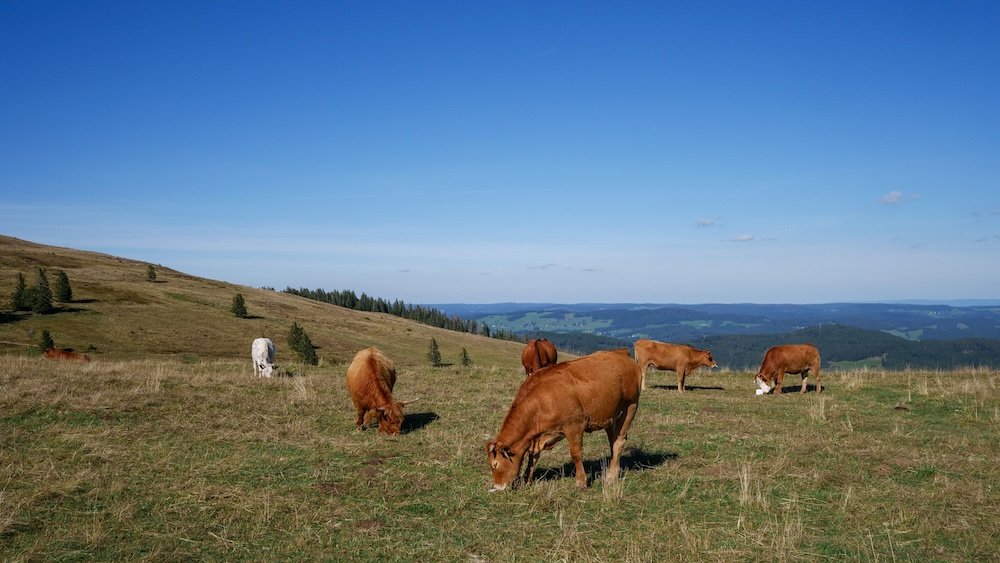
Black Forest Travel Guide: Conclusion
The Black Forest is more than just a German travel hot spot—it’s a deep tapestry of misty slopes, tranquil lakes, and villages that carry age-old traditions. Even after you’ve checked off your main things to do, there’s always another vantage point or a lesser-known culinary treat awaiting discovery. This corner of southwestern Germany can feel timeless. And yet, it evolves with each season: snow-capped winters yield tranquil cross-country ski trails, vibrant springs fill the air with floral scents, summer invites you to cool off in lakes, while autumn cloaks the forests in fiery hues.
One key takeaway from the region is that balance underpins almost everything. Locals still pass on artisan crafts while welcoming modern influences in architecture, wellness, and dining. Traditional cuckoo clocks share space with contemporary design. Cozy farm stays sit near upscale spa hotels. Even the activities range from adrenaline-spiking canyoning to gentle boat tours on calm waters. By exploring a mix of these elements, you taste the region’s full depth.
Final Thoughts
If you’re all about nature, the Black Forest delivers spectacular trails around Feldberg or along Ravenna Gorge. If your focus tilts to culture, day trips to Freiburg or Strasbourg deepen your perspective on cross-border influences. And for the foodies, local ham, spätzle, and that decadent Black Forest Cake will keep your taste buds entertained. Meanwhile, each new vantage point—a lake’s still surface at dawn or a mountaintop at sunset—feels like an invitation to linger a bit longer.
On the practical side, the region’s transport infrastructure caters to many travel styles. Public trains and buses, supplemented by the Konus Card in certain accommodations, suit those who prefer a greener approach. A rental car, on the other hand, allows for spontaneous detours to remote valleys. Lodging picks are equally diverse: boutique hotels in lively towns, farm stays for a rural vibe, or hostels where you can meet fellow wanderers. The best plan typically merges both structure and flexibility—decide on a few anchors (like must-see lakes or top hikes) but leave wiggle room for surprise local tips.
Wherever your final itinerary takes you—be it an easy lakeside stroll, a scenic cable car ride, or sampling a slice of Schwarzwälder Kirschtorte under a bright café awning—may your time in the Black Forest be nothing short of a blast. Safe travels!
